Building a Ladybug Hotel in Your Garden!
Ladybugs are beneficial insects in the garden, and they are great consumers of aphids and other parasites that wreak havoc on plantations. They avoid using chemical treatments and are qualified as auxiliary insects for the help they give to gardeners. To make your garden a welcoming place and encourage them to stay, you can make their small shelters.
Ladybugs, precious allies of the gardener
Ladybugs are known for their ability to consume large quantities of aphids. A single adult ladybug can eat more than 100 aphids per day, and a single ladybug larva can consume up to 300 aphids in 18 days, the period corresponding to the larval stage. This appetite drastically reduces the risk of aphid damage in plantations.
Moreover, ladybugs eat aphids and other parasites such as mealybugs, whiteflies, mites, and fungi such as powdery mildew, which threatens roses and many vegetables, trees and shrubs.
In winter, they go into hibernation and, at the end of the summer, they start looking for shelter to survive the cold season. They can slip under the bark of a tree or in the lichen present on its trunk, in the interstices of a wood reserve or the crack of a wall. They sometimes try to get into houses where the conditions for their survival are not met.
You can help ladybugs cope with winter by building shelters for them in different places in your garden. There are 4,000 species around the world having different habitat requirements. Therefore, you will have to make sure that you place some shelters high up, against a facade or a tree trunk, for example, and others at ground level, on stones or a few logs so that they are protected from the cold.
In the spring, the ladybugs will reward you by getting rid of aphids and other pests!
A ladybug shelter with wooden boards
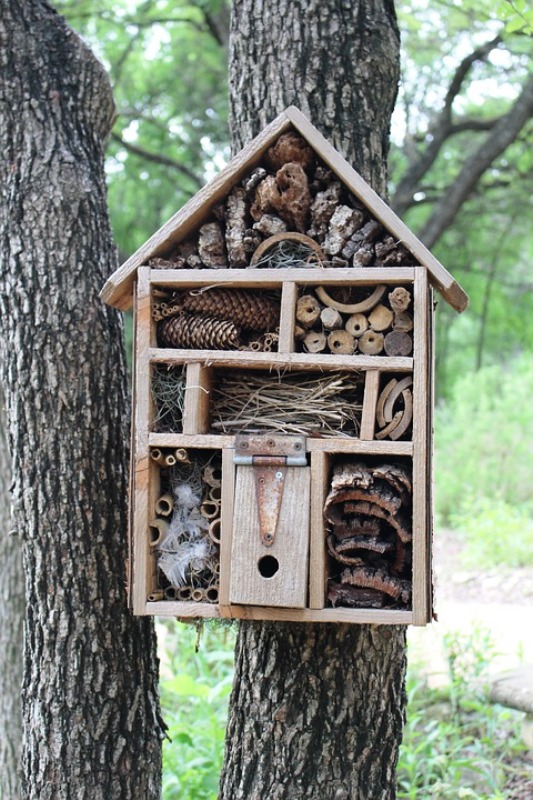
Ladybugs love to take refuge between the small wooden boards of these shelters, which are very easy to make.
To prepare this shelter, you will need the following materials:
– Untreated plywood
– A threaded rod
– Nuts
– A drill and screwdriver
– Screws
– A saw
– A slate
Start by cutting the interior planks, which will serve as a refuge for the ladybugs and those used to make the floor, the roof, and 3 sides of the shelter. You can count 5 interior planks of 15×20 cm and 5 other planks of the same size for the other elements of the shelter. Ideally, the boards used for the floor, roof, and sides of the box should be thicker than the interior boards.
The following thicknesses are ideal:
– 0.5 cm for the inner boards
– 1 cm for the roof, floor and sides
Drill a hole slightly larger than the diameter of your threaded rod in the centre of the 5 inner boards, and assemble the whole by alternating a nut and aboard. Then screw in the floor, the three sides and finally the roof, which you will cover with a slightly larger slate, about 20×25 cm, to make the shelter perfectly waterproof and protect it from the cold.
You can make several similar shelters and place them in different parts of your garden, either high up or at ground level, but not directly on the ground to avoid cold and dampness. Choose places protected from the wind, such as a tree trunk, a facade or a low wall, preferably facing south or southeast.
If you don’t like to do it yourself, it is possible to prepare some very simple shelters for ladybugs by drilling a few holes in birdhouses purchased at pet stores, which you will line with crumpled old newspapers or dead leaves. You can also put a bed of dead leaves in one or more clay pots or prepare small bundles by assembling twigs and some green waste, such as the remainder of a hedge cut or a rosebush pruning.
Some additional measures
You can implement a few simple measures to encourage ladybugs to come to your garden and consider it a welcoming place.
First of all, do not use chemical plant protection products, whether insecticides or herbicides, as ladybugs will not survive them.
Grow plants that ladybugs like for their pollen and nectar when they come out of hibernation. Grasses, dandelions, tansy, knapweed, fruit trees and hazelnut flowers are prevalent with ladybugs when aphids and other pests are absent.
Don’t forget the plants that aphids like: if aphids are absent from your garden, you won’t have ladybugs. The main thing is to keep these aphids away from the plants, but not too far away, so that the ladybugs can intervene in case of an infestation. Note: ladybugs only lay eggs on plants infested with aphids so that their larvae can feed without moving.
A good solution is to let some nettles grow to attract aphids, which will convince the ladybugs to stay without putting your crops at risk. This will persuade the ladybugs to stay without putting your crops at risk, as the aphids that feed on nettles are a specific species that is not interested in other plants.
Finally, if no ladybugs visit your garden, you can buy larvae in garden centres. I prefer ladybug larvae, which are more greedy for aphids and avoid Asian ladybug larvae, which decimate local species.

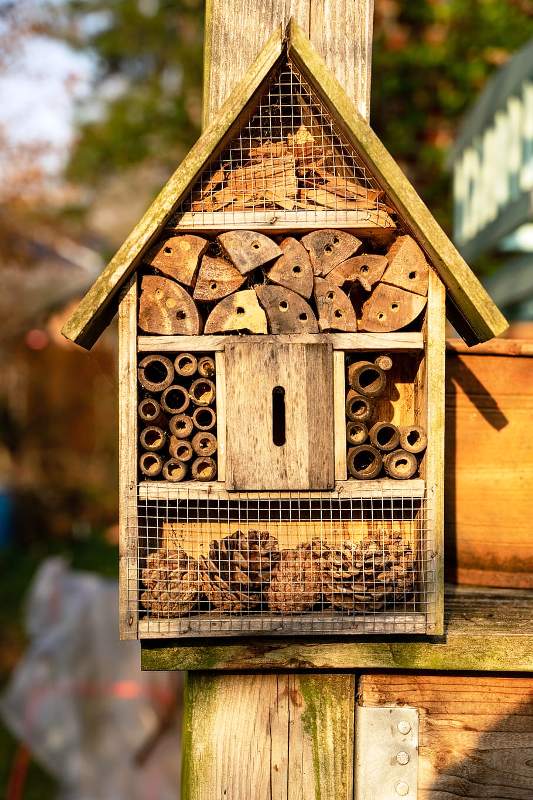
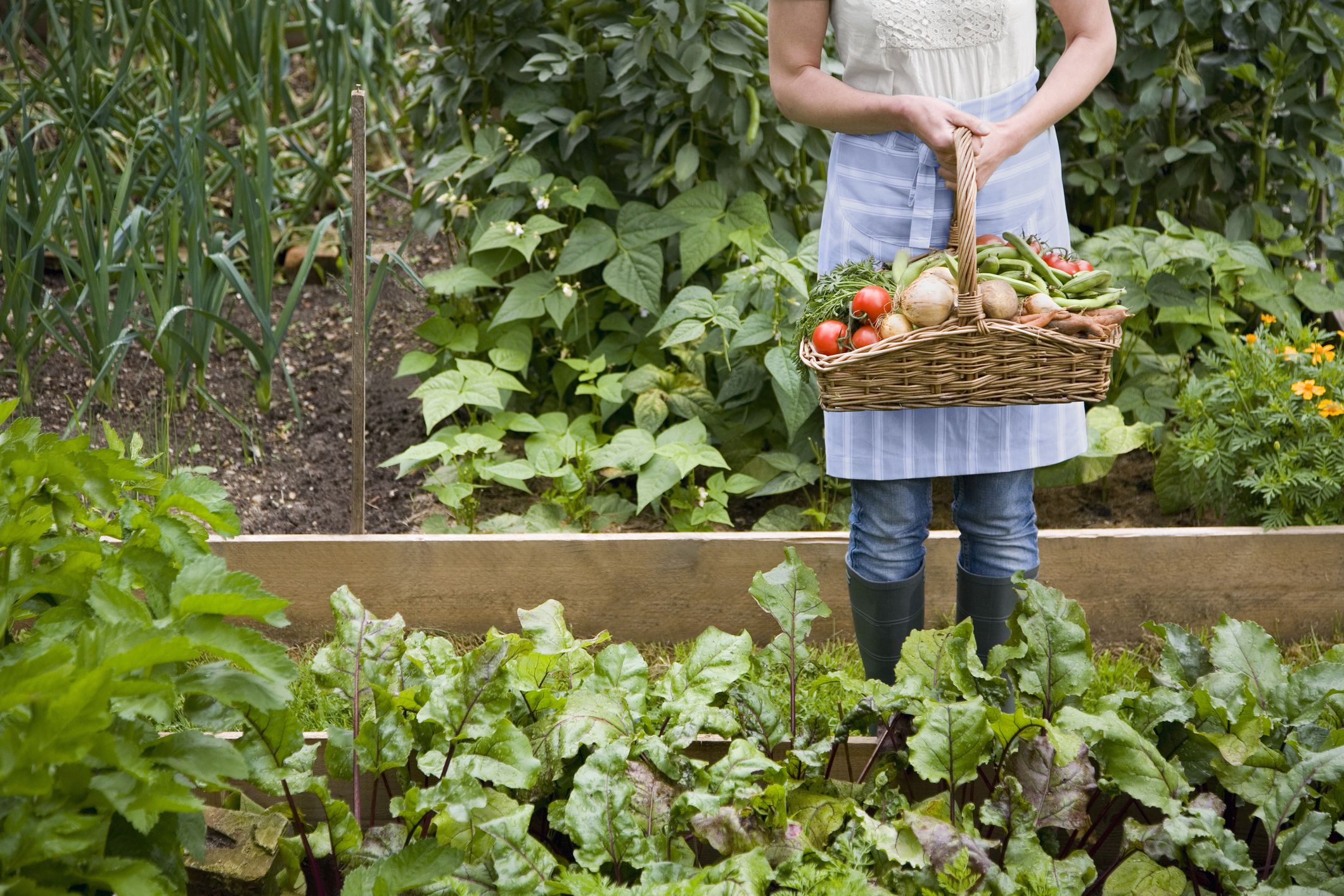

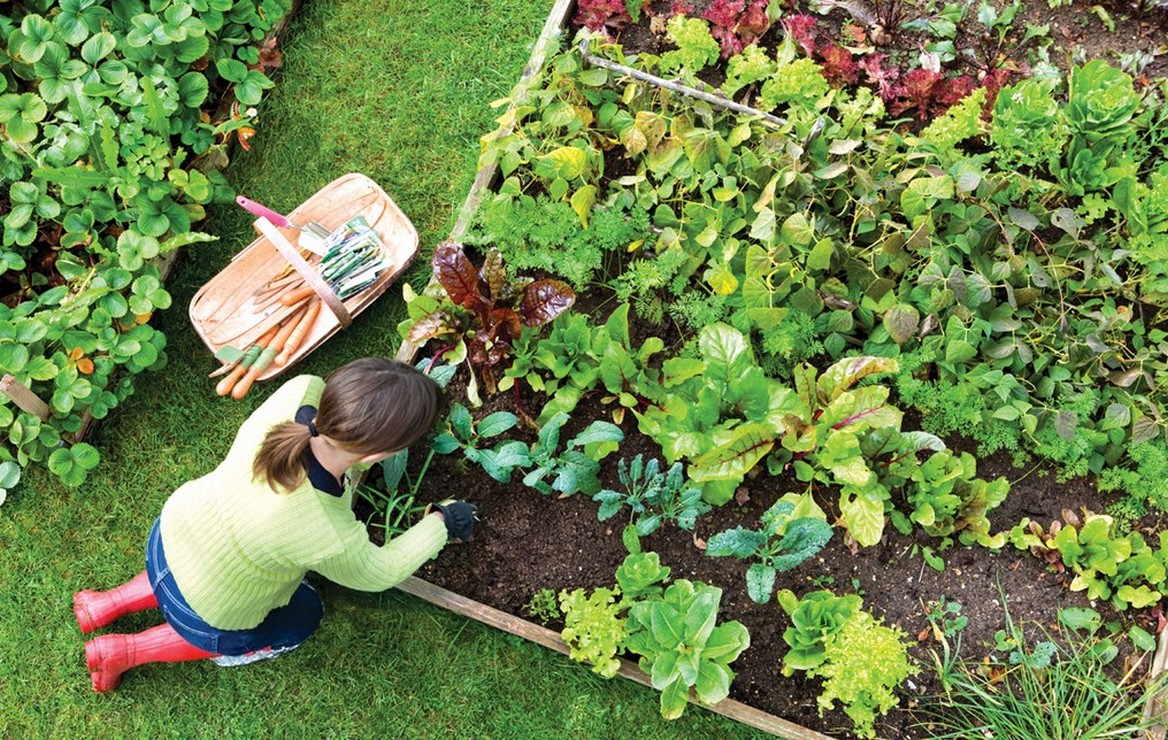
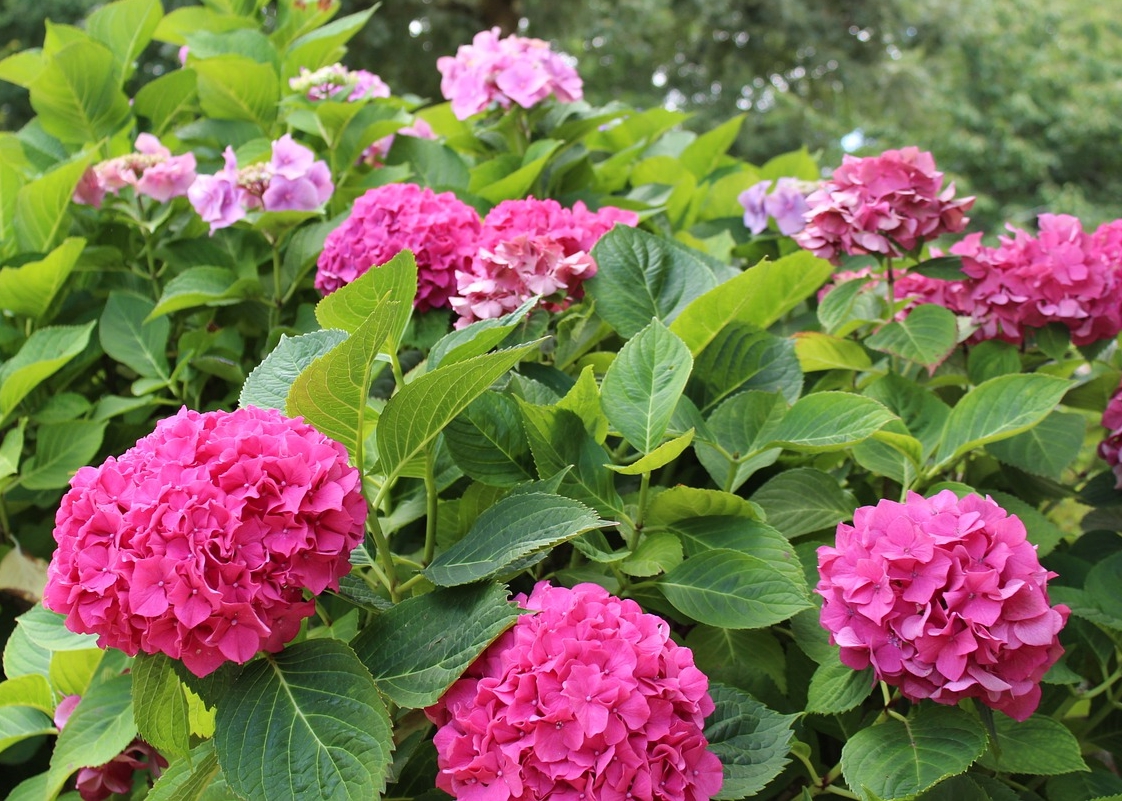
1 Comment
[…] – Building a Ladybug Hotel in Your Garden! […]